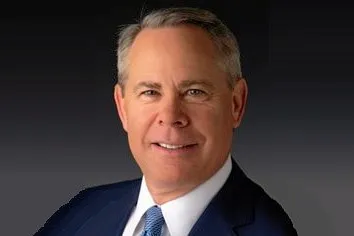NextEra CEO calls for US 'energy realism and pragmatism' to meet surging power demand
John Ketchum asserts US cannot 'isolate' itself to a few technologies, like gas and nuclear, which are more costly than ever and take longer to build than renewables

US policymakers should exercise “energy realism and pragmatism” to place the country in best position to meet more than 450GW of cumulative demand for new electric generation between now and 2030, according to John Ketchum, CEO of industry pacesetter NextEra Energy.
“America is going to need all forms of energy to meet this enormous demand,” he said on an earnings call. “But we need to be practical about when technologies will be available at scale and how much they’ll cost when they show up.”
All of which factors into how much Americans pay on their electric bill each month.
“This is why energy policy in Washington is so important and why we cannot isolate ourselves to just a couple of technologies, like gas and nuclear, which are much more expensive than they’ve ever been and take far longer to build,” he told analysts.
NextEra is by far the largest US grid-scale battery storage, storage, and wind capacity player, and a major operator of gas-fired and nuclear power plants. The “quintessential, all-forms-of-energy company,” as Ketchum calls it.
Ketchum has emerged a leading power sector advocate for balanced and practical solutions for the country’s looming generation capacity deficit, a sharp contrast to policies pursued by President Donald Trump and immediate predecessor Joe Biden.
Trump is assertively promoting hydrocarbons including an effort to expand coal-fired generation, which has been in steady decline in the past decade. His administration is also supportive in varying degrees of biofuels, geothermal, kinetic hydropower, and nuclear.
In contrast, he is actively moving to suppress offshore wind development and withdraw federal policy support for onshore wind and utility-scale solar.
Biden, in turn, sought to eliminate coal, fuel oil, and natural gas for electricity production, replacing them with mainly solar, along with onshore and offshore wind. Nuclear also had a role, although it was not widely embraced by his political party.
Since 2001, five successive Democratic and Republican administrations have sought to undo, with different levels of success, energy policies imposed by the prior one. Most aggressive and sweeping in this regard have been Trump and Biden.
Democrats are making little secret they would scrap most of what Trump is seeking to achieve should they regain the White House in 2028.
Lack of bipartisan consensus on energy has left the US without clear medium- and long-term policy pathways to put the country on a firm footing to keep pace with forecast burgeoning demand.
Thus, a pressing need for energy realism, which according to Ketchum, is about embracing all forms of energy solutions and understanding US electricity demand is here now - and it’s not slowing down.
“Frankly, it’s unlike anything we’ve ever seen since the end of World War II,” he asserted.
Realism is closely tied to energy pragmatism, which Ketchum argues is about recognising certain technologies are ready at-scale today, while and others need more time to mature. And, importantly, there will be significant tradeoffs with timing and cost of each.
“Today, renewables and battery storage are the lowest cost form of power generation and capacity. And we can build these projects and get new electrons on the grid in 12 to 18 months,” he said.
The US should be thinking about both as a critical bridge to when other technology is ready at scale, like new gas-fired plants, according to Ketchum.
“We expect 75GW of new gas to come online between now and 2030. That is significant, for sure, but nowhere close to meeting the over 450GW of total generation we believe are needed,” he said.
Policymakers should understand that gas-fired plants will come online at a higher cost than renewables and storage because gas turbines are in short supply, and in high demand.
Ketchum highlighted that it’s also proving difficult for US contractors to re-establish the highly skilled workforce required to build complex gas-fired, combined cycle plants. They rely on 1,000 workers across dozens of niche trades.
They are hiring thousands of extra people to address high washout rates, with some workers leaving earlier for higher paying jobs building, for example, LNG terminals, data centres, semiconductor chip manufacturing facilities and other industrial facilities. Other workers are showing up to job sites without the necessary skills, according to Ketchum.
“All of this puts upward pressure on prices and the time to build gas plants. It’s why the cost to build a gas-fired plant has tripled in the last few years – and is poised to increase even further due to tariff exposure,” he said.
NextEra believes that nuclear will continue to play an important role in meeting demand. “But again, we need to be practical about when that will happen,” he said, with limited opportunities to restart closed large units.
It estimates that small modular reactor technology is still 10 years away at scale in the best of scenarios and at a much higher price point than gas-fired generation.
Lastly, the option to defer coal plant retirements to meet demand, which Trump supports, is also not a solution, asserts Ketchum.
“Even if we kept online every coal plant in America slated to retire, it would only add approximately 40GW to the grid. And many are months away from retirement or are already slated to be converted to gas,” he said.
(Copyright)